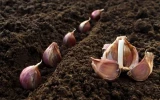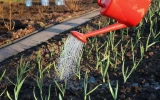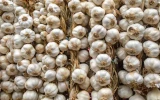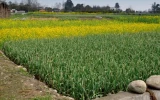Why Is My Garlic Plant Turning Yellow? (And How to Save It)
Garlic plants adding a yellow twist to their usual green can cause concern for any gardener. This change often signals underlying issues ranging from nutrient deficiencies to improper watering practices. In this article, we'll explore the common reasons behind the yellowing of garlic plants and share effective strategies to rejuvenate and protect your garden's flavorful addition.
Garlic plants turning yellow could indicate overwatering, nutrient deficiencies, or disease. To save them, ensure proper drainage, reduce watering, and apply a balanced fertilizer. If disease is suspected, remove and destroy the affected plants.
Make sure that adequate sunlight and good soil conditions are maintained, as they can help speed up recovery. Let's take a closer look at the possible root causes of garlic leaves turning yellow, so you can turn things around and save your plant as early as possible.
Summary
- Garlic is sensitive to both overwatering and underwatering, each causing yellowing leaves due to different reasons.
- The yellowing of garlic leaves can also be attributed to deficiencies in key nutrients such as nitrogen, potassium, and magnesium.
- Pests like nematodes, thrips, and aphids, as well as fungal diseases such as white rot and downy mildew, can cause yellowing and other damage to garlic plants.
- Adjusting watering practices, correcting nutrient deficiencies, managing pests and diseases, or making environmental adjustments can help save and improve the health of garlic plants.
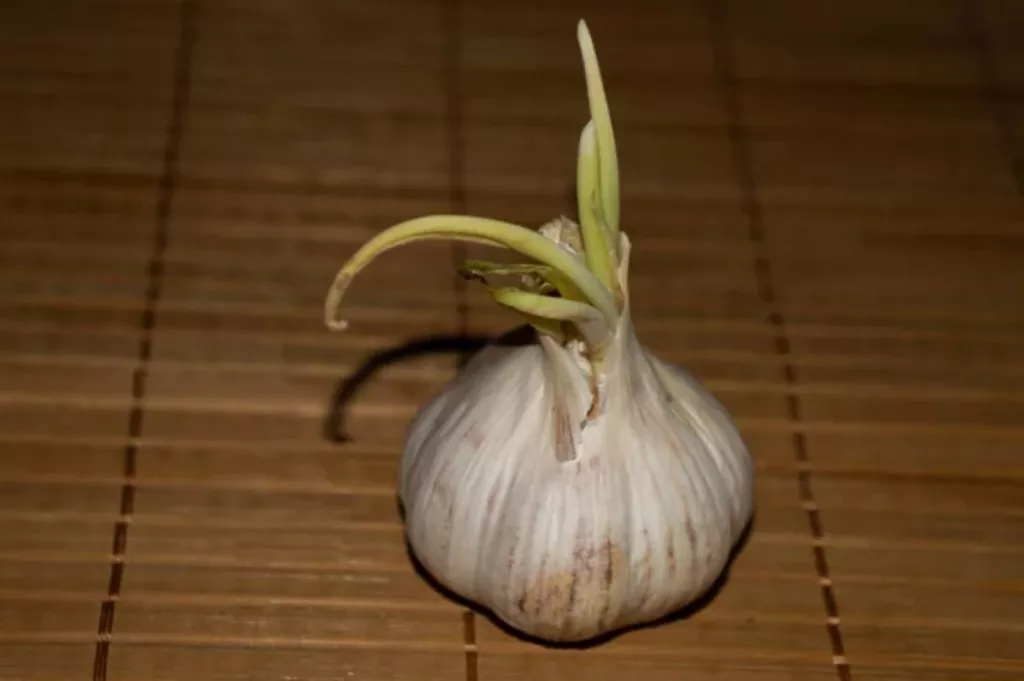
On this page:
Common Causes Why Garlic Leaves Turn Yellow
When you notice your garlic plants' leaves turning yellow, several factors could be at play, from watering habits to pest issues. Let's explore these causes to help you identify and resolve the problem.
It might be due to watering issues
Overwatering and its effects
Garlic plants are particularly susceptible to overwatering. Excessive water can lead to poor aeration in the soil, creating a waterlogged environment that stifles the roots' ability to breathe.
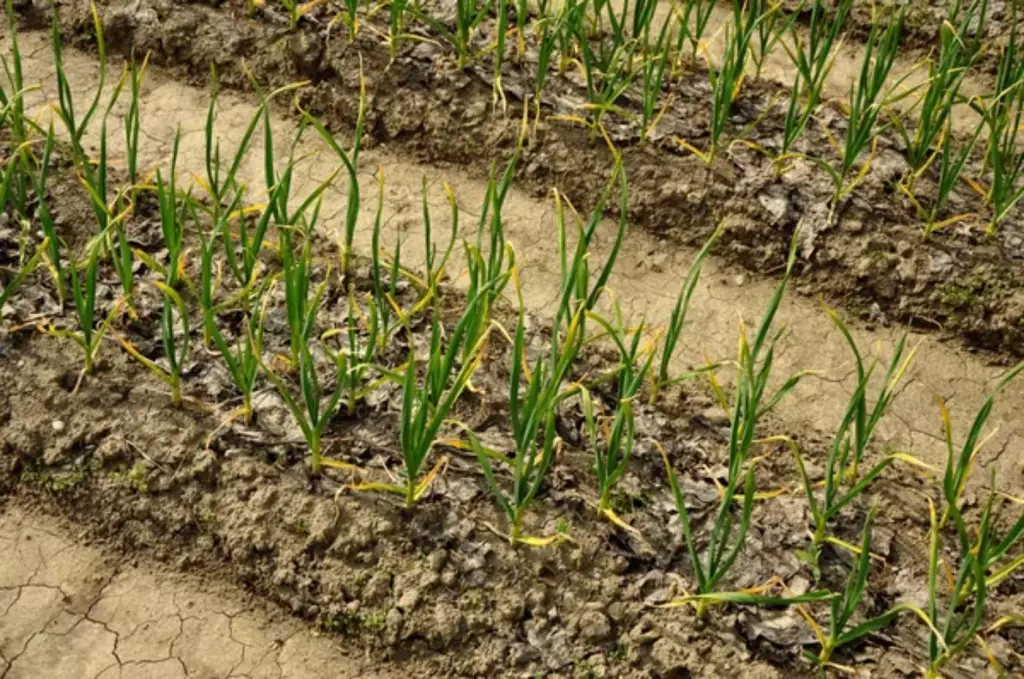
This condition can trigger root rot, a detrimental condition marked by the yellowing and wilting of foliage. The roots of overwatered garlic plants often become soft, brown, and mushy, significantly impairing the plant's overall health and productivity.
Underwatering and its symptoms
Conversely, underwatering garlic can also lead to yellowing leaves. Garlic requires a consistent moisture level in the soil to thrive.
When the soil becomes too dry, the plant's ability to photosynthesize is compromised, leading to the yellowing of leaves and stunted growth.
The key to avoiding underwatering is maintaining a balanced watering schedule, ensuring the soil remains moist but not waterlogged.
It can be caused by nutrient deficiencies
| Nutrient | Symptom | Remedy |
|---|---|---|
| Nitrogen | Older leaves turning yellow | Apply balanced organic fertilizer |
| Potassium | Yellow leaf edges | Use potash fertilizer |
| Magnesium | Lower leaf yellowing | Add Epsom salts to soil |
Identifying and addressing nitrogen deficiency
Nitrogen is crucial for the healthy growth of garlic, promoting lush, green leaf development. A nitrogen deficiency can lead to yellowing leaves, starting with the older, lower leaves and progressively affecting the plant.
To combat nitrogen deficiency, organic amendments such as compost or a balanced, slow-release fertilizer rich in nitrogen can be incorporated into the soil.
The impact of other nutrient shortages (e.g., potassium, phosphorus)
Besides nitrogen, garlic plants can suffer from deficiencies in other essential nutrients like potassium and phosphorus. Potassium deficiency often manifests as yellowing at the leaf edges, while a lack of phosphorus can lead to overall stunted growth and darkened leaves.
Addressing these deficiencies involves applying a balanced fertilizer or specific nutrient amendments based on soil test recommendations.
It can be due to pest infestations
Common pests affecting garlic plants
Garlic plants can fall victim to various pests, including aphids, thrips, and nematodes. These pests not only cause direct damage by feeding on the plant's sap and tissues but also by transmitting diseases.
| Pest | Indicator | Solution |
|---|---|---|
| Nematodes | Yellowing and stunting | Apply organic pesticides |
| Thrips | Silver or yellow streaks | Introduce beneficial insects |
| Aphids | Misshapen leaves | Use insecticidal soaps |
Signs of pest damage and control measures
Pest damage often appears as yellowing leaves, stunted growth, and sometimes the presence of the pests themselves.
Control measures include regular monitoring, maintaining plant health to resist infestations, and using organic or chemical pest control methods as needed.
The plant might have diseases
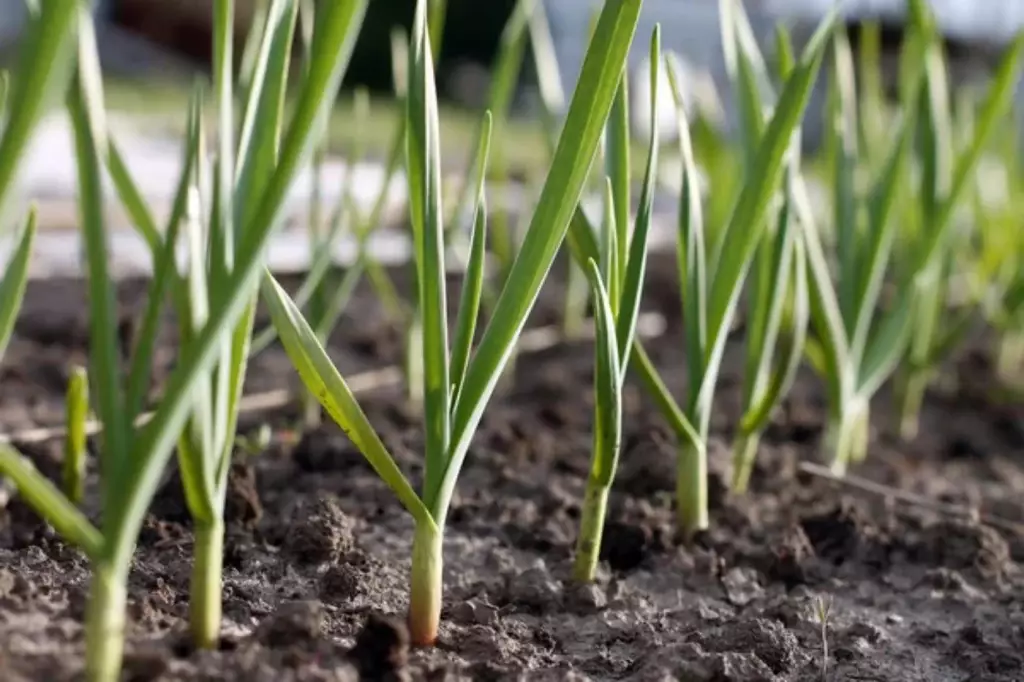
Fungal diseases: Symptoms and prevention
Fungal diseases like white rot and downy mildew can cause yellowing and decay in garlic plants. Preventative measures include crop rotation, proper spacing to ensure good air circulation, and avoiding overhead watering to reduce leaf wetness.
| Disease | Symptom | Management |
|---|---|---|
| White rot | Soft, yellowing bases | Improve soil drainage |
| Basal rot | Yellowing starting at base | Remove and destroy infected plants |
Identifying and managing bacterial and viral infections
Bacterial and viral infections can lead to symptoms such as yellowing leaves, stunted growth, and mosaic patterns on the leaves.
Managing these infections involves removing and destroying infected plants, practicing good sanitation, and selecting disease-resistant garlic varieties.
Environmental stress may cause leaf-yellowing in garlic
| Environmental Factor | Impact on Garlic | Adjustment |
|---|---|---|
| Light exposure | Lack of sunlight causes yellowing | Ensure full sun exposure |
| High humidity | Promotes fungal growth | Improve air circulation |
Temperature extremes and their impact
Garlic is sensitive to temperature extremes. High temperatures can lead to premature yellowing and bolting, while very low temperatures if the garlic is not properly hardened off, can damage the foliage and roots.
Providing appropriate mulch can help moderate soil temperature and protect the plants. Planning to cultivate garlic? Read this article to find out the best place to plant them.
The role of sunlight and garlic plant health
Garlic requires full sunlight for optimal growth. Insufficient sunlight can lead to weak, yellowing plants as they struggle to photosynthesize effectively.
Ensuring that garlic is planted in a location that receives at least 6 to 8 hours of direct sunlight daily is essential for healthy growth.
How Do You Save a Garlic Plant That Is Turning Yellow
If your garlic plants are showing signs of yellow leaves or tips, it's important to act quickly. Implementing the right solutions can reverse yellowing and help your plants thrive.
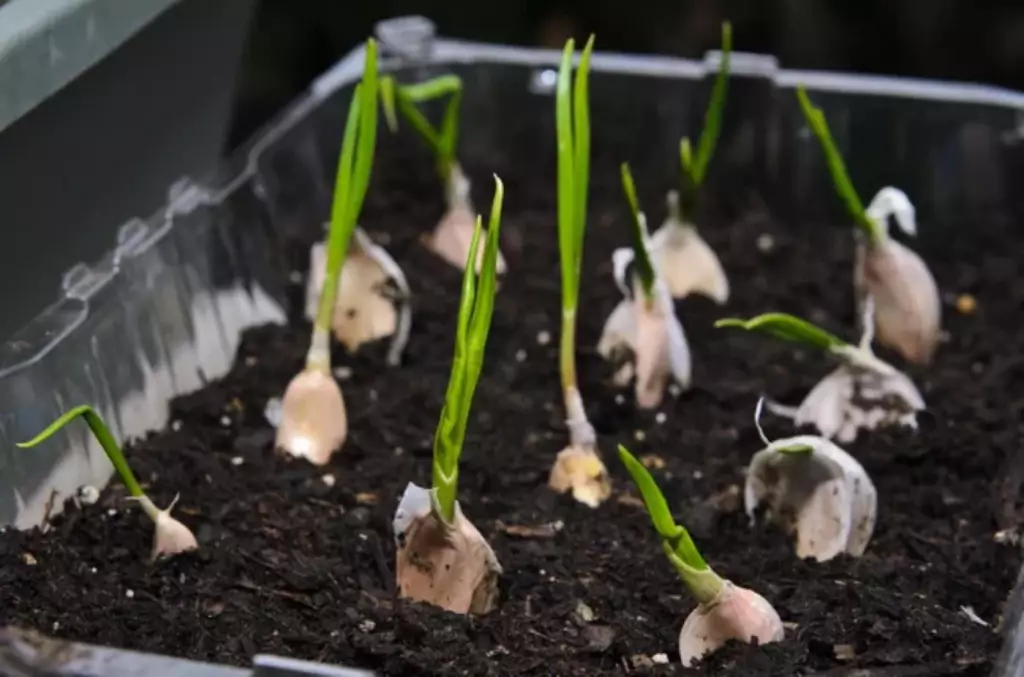
Adjust watering practices
Consistent moisture is crucial for garlic, but it's easy to get the balance wrong. Here's how to adjust:
- Overwatering: If leaves turn yellow and the soil is soggy, reduce watering and allow the soil to dry between irrigations.
- Underwatering: Dry soil and wilting yellow foliage signals the need for more frequent watering.
| Condition | Watering Frequency | Amount of Water |
|---|---|---|
| Overwatering | Reduce to once per week | 1 inch per week |
| Underwatering | Increase to 2-3 times per week | Until soil is moist |
Correct nutrient deficiencies
Nutrient imbalances can cause yellowing leaves. Addressing deficiencies is key:
- Nitrogen: Enhance yellowing leaves with a nitrogen-rich fertilizer.
- Potassium and Magnesium: Use a fertilizer that includes potassium and magnesium, or apply Epsom salt to target magnesium directly.
| Nutrient | Deficiency Signs | Solution |
|---|---|---|
| Nitrogen | Pale yellow leaves | Apply liquid fertilizer with nitrogen |
| Potassium | Yellow tips; weak growth | Use balanced fertilizer |
| Magnesium | Interveinal yellowing | Epsom salt or magnesium fertilizer |
Pest and disease management
Pests and diseases can cause yellowing:
- For nematodes or thrips, use an appropriate pesticide.
- Tackle fungal infections with copper fungicide or similar treatments.
| Problem | Indication | Treatment |
|---|---|---|
| Nematodes | Stunted growth; yellow foliage | Nematicide or organic control |
| Fungal disease | Yellow patches; mold | Apply copper fungicide |
Environmental adjustments
Improving your garlic's environment can prevent and fix yellowing:
- Well-drained soil is critical. Add sand or peat to improve drainage.
- pH levels: Balance soil pH with wood ash or dolomite flour.
| Aspect | Strategy | Effect |
|---|---|---|
| Soil drainage | Mix in sand or compost | Reduces waterlogging |
| pH levels | Apply wood ash if acidic | Raises soil pH |
Remember, proper mulching can help maintain soil moisture and temperature, beneficial for preventing stress that leads to yellow foliage. Consistent care and proactive adjustments will keep your garlic green and growing.
Preventive Measures to Avoid Garlic Plant Yellowing
Practice crop rotation
To prevent diseases like black sclerotia, you must rotate your garlic with crops that are not closely related. For example, follow garlic with corn, which is a non-related species, to disrupt disease cycles.
Apply a balanced fertilizer
- Nitrogen: Apply 40-50 lbs per acre at planting to promote healthy growth.
- Phosphorus and potassium: Depend on soil test results; however, garlic usually needs less of these.
Stick to a consistent watering schedule
Use a moisture meter to ensure you're providing just enough water—aim for 1 inch per week, increasing before bulb formation.
Keep in mind the optimal spacing
Plant cloves 6 inches apart. This provides each plant with enough space to grow and reduces the chance of pest and fungal disease spread.
Monitor soil pH
Maintain a pH between 6.0 and 7.0 for optimum growth. Test your soil and amend as necessary.
Try using organic fertilizers
Consider using composted manure or a balanced organic fertilizer to provide a slow-release source of nutrients.

Overall management
Remember to keep an eye on the following:
- Moisture levels: Over-watering can cause yellowing leaves while under-watering can stress the plant.
- Weed control: Weeds can compete with garlic for nutrients. Regularly clear them to ensure your plants have access to the nutrition they require.
- Pest & disease management: Regularly inspect for pests and signs of disease. Utilize preventative organic pesticides if necessary, but always follow the manufacturer’s guidelines.
You can find a more detailed discussion of the ideal growing conditions for garlic plants in this article.
